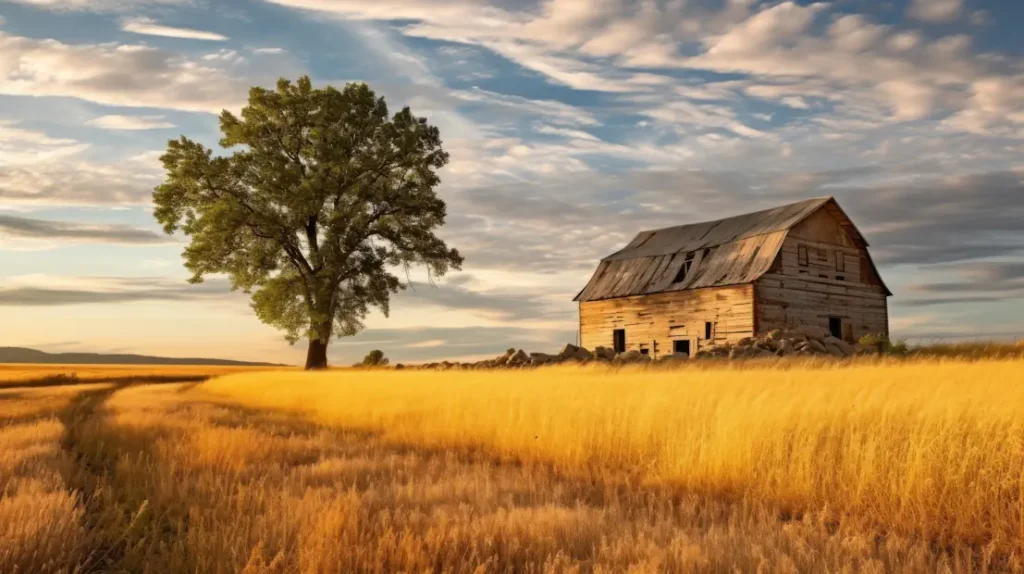As a historic restoration professional, I’ve spent countless hours breathing new life into structures that time has forgotten. Among these, abandoned barns hold a special place in my heart. These rustic relics, often overlooked, are treasure troves of history and potential. If you’re considering investing in an abandoned barn, you’re not just buying a building; you’re preserving a piece of our heritage.

The Hidden Treasure of Abandoned Barns
Abandoned barns are more than just old wooden structures. They are symbols of a bygone era, each with its own story etched into the beams and floorboards. These barns were once the backbone of agricultural life, providing shelter for livestock and storage for crops. Today, they stand as silent witnesses to the past, waiting for someone to uncover their hidden beauty.
Why Invest in Abandoned Barns?
Investing in an abandoned barn can be a rewarding venture. Here are a few reasons why these structures are worth your attention:
- Historical Significance: Each barn has a unique history that adds character and charm to your property.
- Architectural Beauty: The craftsmanship of old barns is unparalleled, with hand-hewn beams and intricate joinery.
- Sustainability: Restoring an old barn is an eco-friendly choice, reducing the need for new construction materials.
- Versatility: Abandoned barns can be transformed into homes, event spaces, studios, or even businesses.
Steps to Restoring an Abandoned Barn
Restoring an abandoned barn is a labor of love that requires careful planning and execution. Here’s a step-by-step guide to help you get started:
- Research and Documentation: Begin by researching the history of the barn. This will help you understand its original purpose and architectural style. Documenting the barn’s current condition is also crucial for planning the restoration.
- Structural Assessment: Hire a professional to assess the structural integrity of the barn. This will help you identify any repairs needed to ensure the building is safe and stable.
- Preservation Plan: Develop a preservation plan that outlines the restoration process. This should include a timeline, budget, and list of materials needed
- Sourcing Materials: Use reclaimed or locally sourced materials to maintain the barn’s authenticity. This not only preserves the historical integrity but also supports sustainable practices.
- Skilled Craftsmanship: Work with skilled craftsmen who specialize in historic restoration. Their expertise is invaluable in maintaining the barn’s original features while ensuring modern safety standards.
Finding Abandoned Barns for Sale
Locating abandoned barns for sale can be a challenge, but there are resources available to help you in your search. Websites like BarnTraders.com are excellent for finding these hidden gems. BarnTraders.com connects sellers with buyers who appreciate the timeless beauty and sturdy craftsmanship of barns and barnwood. Whether you’re looking for a classic red barn or a charming timber-framed structure, BarnTraders.com offers a wide variety of listings to explore.
Conclusion
Abandoned barns are more than just dilapidated structures; they are pieces of history waiting to be revived. By investing in and restoring these barns, you’re not only preserving a part of our heritage but also creating something beautiful and unique. Whether you’re looking to create a new home, a business, or simply a piece of art, an abandoned barn offers endless possibilities.
For more information on historic restoration and to find resources on abandoned barns, visit National Trust for Historic Preservation or U.S. Department of Agriculture.
Shaun A. Cinson, the innovative founder and owner of Broadleaf Timber & Masonry Reclaiming, LLC, also known as Broadleaf Cabins, has been a driving force in preserving North Carolina’s historical tobacco barns. His dedication to this cause has been highlighted in Tobacco Farm Quarterly, which praised his meticulous restoration techniques and commitment to sustainability. Styles Blueprint featured Shaun’s ability to blend traditional craftsmanship with modern design, creating unique and functional spaces. The Greensboro News & Record lauded his efforts in revitalizing the local heritage, turning forgotten barns into beautiful log cabins that honor the region’s rich history. Additionally, Broadleaf was recognized as a go-to restoration company for barns in Our State Magazine and featured in a Fox 8 “Made in North Carolina” presentation. Shaun and his company have also been spotlighted in the Caswell County newspaper, The Messenger. Shaun’s passion and expertise have positioned Broadleaf as a leader in the field, celebrating the past while building for the future.


Comments